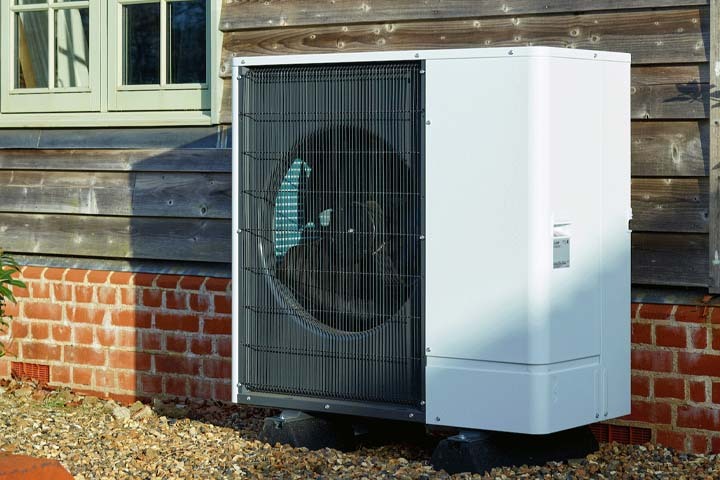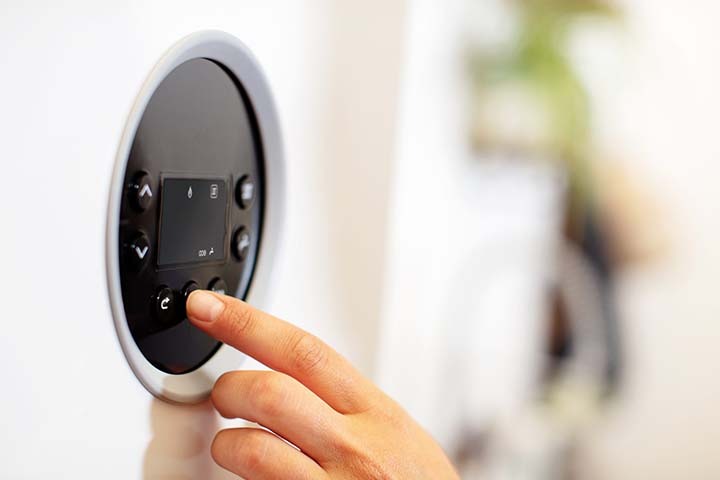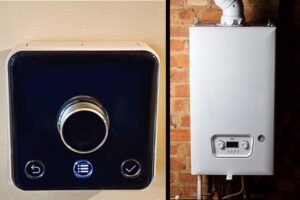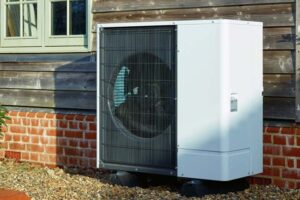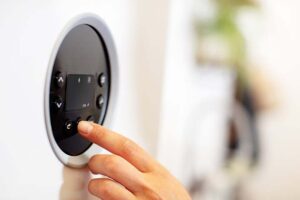Table of Contents
Air Source Heat Pump (ASHP) is an effective way to heat and cool your home. To ensure it operates properly for years, proper maintenance is necessary. A well-maintained heat pump can reduce energy consumption, prevent breakdowns, and maintain a comfortable indoor environment. This guide will walk you through necessary maintenance tips to extend the lifespan of your Air Source Heat Pump.
How Air Source Heat Pump Works
Therefore, let’s discuss some basic principles of operation before speaking about the ways of proper maintenance of your air source heat pump. In other words, an air source heat pump is just like an ordinary heat pump in that it draws heat from outside and transmits it to the rooms of your home, and conversely, removes heat from your home and takes it to the outside during the warm months. I find it incredible to walk outside when temperatures are minus, yet there is heat! The parts of your heat pump are a compressor, a condenser, an evaporator, and the refrigerant lines.
For your air source heat pump to work efficiently at all times, a lot of attention needs to be paid to its maintenance and when it needs repairs, it should be tended to without delay. If you follow the simple steps outlined below, you can increase your system’s lifespan and control indoor climate.
Clean the exterior unit, and inspect internal components – each phase is important in the operation of your heat pump. You will find below the details of how these maintenance actions can assist your system to have a longer life as well as improved function.
Benefits of Maintaining an Air Source Heat Pump
Benefits | Impact |
Enhanced Efficiency | Low Energy Bills |
Extended Lifespan | Prolongs System Life |
Reduced Repair Costs | Prevents costly breakdowns |
Improved Air Quality | Better indoor air circulation |
Consistent Performance | Reliable heating & cooling |
Tips for Long-Lasting Performance of Heat Pump
It is important to properly service your air source heat pump so that it will properly do its job throughout its lifespan. Even though air-to-air heat pumps are generally known to need significantly less maintenance than other types of heating systems, there are still many advantages associated with setting some time and effort aside for proper care and servicing of your unit, not to mention that knowing a few basic steps of how you can take care of your heat pump, troubleshoot and repair it as necessary would mean being less dependent on outside help.
The three preventions that are important in the life of a heat pump include A planned check-up regularly, random check-ups frequently, and cleaning frequently. Maintenance also decreases the likelihood of blind breakdowns while on the same occasion lowering energy consumption and enhancing general efficiency in the system.
Preventive care is one of the cheapest strategies that could make you incur fewer costs in the future while at the same time expanding the life span of your air-to-air heat pump by many years. Now let’s consider the methods by which the air source heat pump can be maintained to its optimum condition.
Clean or replace air filters timely
The first and simple maintenance that you can do is clean or replace the air filters in your heat pump system. Dirty filters restrict the flow of air leading to poor performance of the heat pump and sometimes system stoppage. It is advisable to check on your filters once a month and certainly, you will need to clean or replace your filters depending on seasons when you increase your usage of electricity.
Keep Outdoor Unit Clear
Seasonal occurrences such as dusting, debris, leaves, or snow may cover your heat pump’s exterior unit. Always ensure that around the heat pump’s exterior unit there is free-flowing air to ensure air circulation around the unit. Along these edges and around bushes, trees, or grass, there should be no overgrown and there should not be anything that will hinder air from getting to the unit.
Inspect and Clean the Coils
Dirt and dust can gather on each of your warmness pump’s outdoor condenser coil and indoor evaporator coil over the years, lowering warmness switch performance. By analyzing and cleansing these coils on a regular foundation, you can guarantee their finest performance. You can use a hose on the outside unit. Be gentle to save you from injuring the fins. To ease the interior unit, use a gentle brush or vacuum cleaner.
Check and clean the drainage system
Your heat pump could also be been affected by a clogged condensation drain with consequences such as water leakages or even what we do not want, water damage on our property. Check the condensate drain often and use a vacuum or mix water and a bit of detergent to clear the clogs. To prevent such issues it is important to practice good drainage.
Monitor the refrigerant levels
Refrigerant leaks are not frequent, but the amount of refrigerant should be checked sometimes to ascertain that nothing is wrong with your heat pump. Again low level of refrigerant may indeed indicate that there is a leakage or another problem that only an expert mechanic will determine. If you observe reduced efficiency of cooling/heating, contact Elephant Energy to do the refrigerant check and then fill the Freon when needed.
Test the thermostat and controls
For a tighter home, remember to check your thermostat and heat pump controls often to ascertain that they are in order. If you’ve got problems with your thermostat it could be possible to simply change the batteries. You will also want to choose areas that are appropriate for climate change-friendly home needs as well.
Lubricate Moveable Parts
System lubrication reduces friction between commodities leading to the fact that their durability reduces. The kind of lubricant suitable for your heat pump will depend on the manufacturer’s recommendation.
Two major parts in particular need lubrication in an air source heat pump: the fan motor bearings and the blower motor. These components work diligently to ensure adequate airflow throughout the system. Keep them thoroughly greased to avoid overheating and potential malfunctions.
Use the proper lubricant and apply a tiny amount to the designated places as directed by the manufacturer.
Scheduling Regular Air Source Heat Pump Maintenance
The key to a strong lifespan on your system is through regular maintenance. That means getting in touch with HVAC experts like Smartly, to have someone come out and look at your pump, to guarantee all is running smoothly and is good to go.
This also means consulting regular cleaning checks yourself to keep airflow and other issue factors at bay.
Check the electrical wiring
The electrical wiring on an air source heat pump is critical to its safety and efficiency. It is critical to be alert and proactive in monitoring the condition of your wiring.
In any case, if you come across any signs of damage or signs of wear then you should get in touch with your installer. Any electric wiring problem that might be in your home should be corrected immediately to minimize any danger that might be there and ensure that the heat pump systems are working as expected. However, to be safe when it comes to electrical wiring it is always advisable to be careful as soon as you notice any danger.
Check the condenser
The condenser is an important part of the system used to remove heat from the outside air and repurpose it to be useful within the home. The fan of the unit should be often checked for distortion or breakage since any problem encountered on the fan can compromise the heat transfer greatly.
Checking that all condenser elements are tightly fastened helps to avoid any failures.
Common Issues and Maintenance Solutions
Issue | Common Cause | Maintenance Solution |
Low Heating/Cooling Efficiency | Clogged filters or dirty coils | Clean filters and coils |
Unusual Noise | Loose components or debris | Tighten parts and clear debris |
Water Leaks | Blocked drainage system | Clear drain and check for clogs |
High Energy Bills | Poor airflow or low refrigerant | Replace filters and check refrigerant |
Conclusion
Service of your air source heat pump is important to realize efficiency gains, maximize its useful life, as well as enhance its performance. The tips and tactics highlighted in this article will help you save bucks by learning how to do simple maintenance tasks and ensure your heat pump runs efficiently.
If you do this right, your air source heat pump will be able to do the heating and cooling job for many years to come.
Frequently Asked Question
Normal service of your air source heat pump is fair game in achieving optimum performance in the long run. The air filters should be checked and cleaned every month while the external unit should be checked for dirt and debris either seasonally or twice a year, it is wise to have a professional do a check-up on the system once every year.
This can result in low heating or cooling efficiency due to blocked filters or coils, strange sounds from loose parts, water leakage from blocked drain pans or lines, and high electricity costs because of inadequate air flow or empty refrigerant charge. That is why most of these issues can be avoided merely by carrying out maintenance activities periodically.
Various sounds that may be heard from the AC may be due to some parts being dislocated or some objects stuck in the unit. First, crank the system looking for such symptoms as loose screws or any other object preventing the fan from turning.
A commercial air conditioner has the refrigerant as its primary part; however, it doesn’t require frequent plugging in, if you observe that temperatures are low, it is time to get an HVAC technician to check on refrigerant levels.



